The Ontario SP46 Gen II Knife, designed by Dan Maragni, is a full tang flat grind knife made of 5160 high carbon steel with a generously sized Kraton grip (there is also a Sabre grind version of the knife labeled the SP47.) Both knives are large bellied knives and are also called “Pig Skinners.” The SP46 knife has a total length of 11.098″, of which 5.574″ is the blade with a thickness of .1875
The sheath it came with when I bought the knife at the time was a very cheap universal sheath designed to fit many of Ontario’s knife models, but I modified the sheath a little to make due by cutting it to length and stitching the end with bank line. I also thickly coated the sheath with plasti-dip spray …
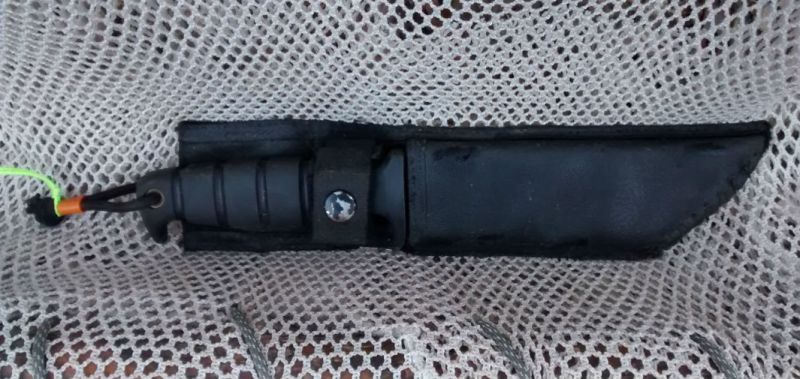
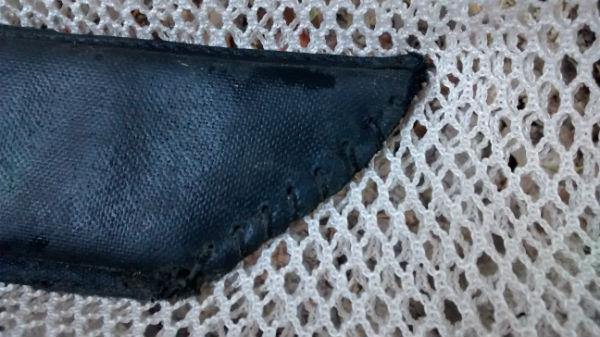
They’re smart for providing a cheap sheath for two reasons: (1)they know most people are more than likely going to sheath the knife in their own custom sheath regardless, whether it be leather, kydex, hybrids, etc. (2) By giving the purchaser a cheap sheath that will get them by for a while, or until they upgrade the sheath, they can apply the money they would have invested in a high quality well manufactured sheath, into the important part, the knife, keeping the total cost down.
So far, after about a years time of owning and using the Ontario SP46, I’ve really found the design to be useful for just about any task I could wish to use it for. It’s great for bushcraft, believe it or not. I use it to take the place of a small axe (an Eastwood Campers Hatchet I own) when I want to carry less weight, which I know nothing could really take the place of an axe or hatchet, but I use the knife to baton with and it can take the beating and the robust Kraton handle absorbs the shock well.
A simple modification can be made with a hacksaw to the upper thumb guard and you’ve got the freedom to slide your thumb up onto the top edge of the knife for certain carving positions…
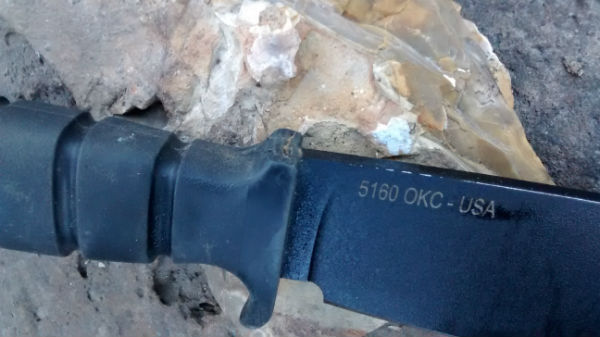
If there is one change I could make to the the knife or suggestion to the makers of the knife it would be to fill in the space where the knife doesn’t quite continue all the way to the handle at the bottom edge. I don’t understand why they stopped the blade short there, about 3/8s of an inch is the gap you’ve got to fit an index finger into and it just isn’t enough. Anyone know the reason for this in the design?…
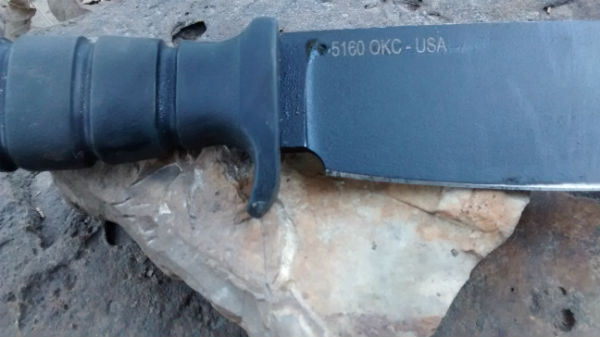
I started using the Ontario SP46 knife about a year ago. I was inspired to get the knife after watching a couple of videos by a youtuber named PAbushcraft. Pabushcraft shows in his videos what the knife is like after years of hard use, and I mean HARD use. You will see the wear and tear he’s done to his knife in the video. I was impressed by the fact the steel had no chips or dings, from what I could see. I will use my knife throughout the rest of year, strip the black coating and blue it, make my own custom sheath for it, or maybe have one made from kydex, yea, that sounds good, and do my own thorough review of the knife to give you a different perspective. So far, I’ve had no problems with the knife, it has held an edge quite well, and has served me well for pretty much all my tasks needed in the forest. I also carry something smaller in tandem with the SP46, which at the time is the Leatherman Wave…
here are two videos by PAbushcraft for a good look at the knife and its durability…
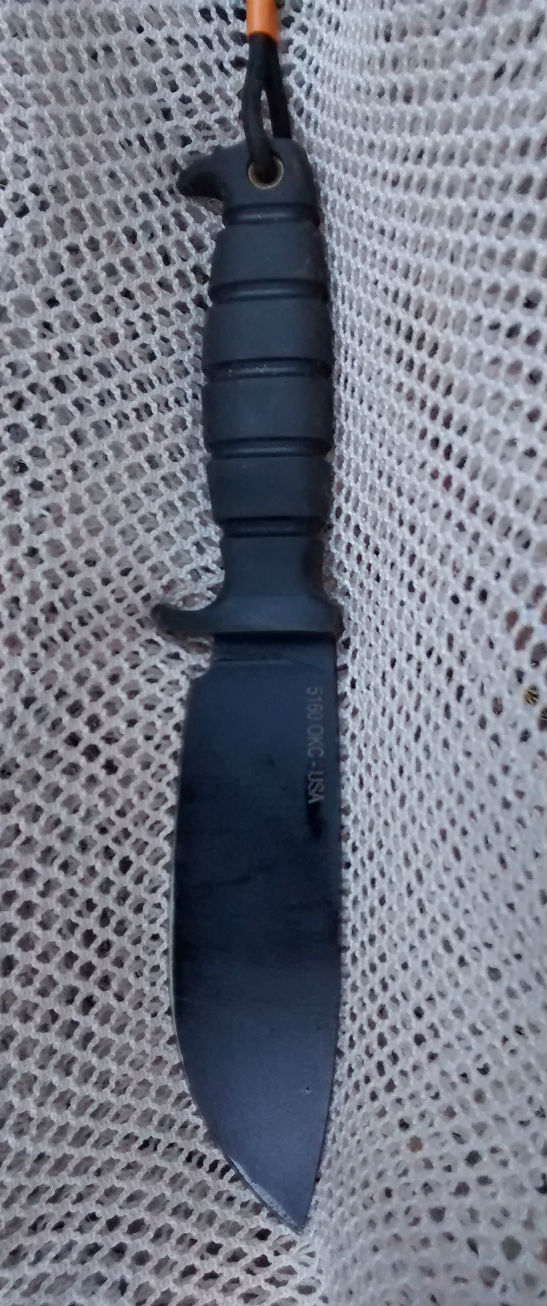

Yo man.
I have the sp48 and love it, but think it would have been wiser to get the 46. It’s just too big.
I’ll probably remedy it soon by just getting both.
The reason the blade doesn’t go all the way down is for ease of sharpening.
I believe it’s called a ricasso traditionally, with (finger) choir being the modern term.
I used to think it wouldn’t make much of a difference when sharpening, til I tried sharpening without one.
(My main learning knife for sharpening had a large choil.)
I recently bought a beater knife without one, and found it so inconvenient that I added one.
I also think it’s nice when I want to lift something hot, but don’t have gloves or a beanie handy, or its actually above flame.
LikeLiked by 1 person
Thanks for the input bro. Personally I’d rather have that little bit more of blade. I think with it missing it gives the overall knife more of a sword feel. I know that may not make much sense, but it’s just a preference. Regardless, I really like the knife. I like the size because for me, I substitute my heavier axe with this knife. If I lived in Alaska, yea I wouldn’t head out without an axe, but for the Southern US the SP46 has been rock solid for me. It’s a champ at batoning.
LikeLike
I get what you mean about the sword feel. I agree, even if I don’t know why. I like that though.
What’s kind of a bummer about a knife without that, such as a classic kabar, as you sharpen it over the years it starts to look lopsided in a lacking way, rather than an over built way.
-in my humble but opinionated view
LikeLike
Wonderful review and report! Reblogged!
LikeLike
Reblogged this on and commented:
I gave serious consideration to purchasing an Ontario SP46, but every knife I have with Kraton or rubber grips, rots and deteriorates. If the SP46 was fitted with a different grip, such as Micarta or similar, from the factory or available aftermarket, the knife would be a more prudent purchase to add to the collection because, my knives are used and not admired. Everything from general work to field dressing harvested game. In fact, I was looking at my Becker BK5 Chore Knife, and read so much online of complaints about the slickness of the handle scales, and all the ideas of “experts”, then thought a while, with knife in hand, and came up with my own solution if I need it. It’s called, sandpaper 80 grit. Problem solved.
LikeLiked by 1 person